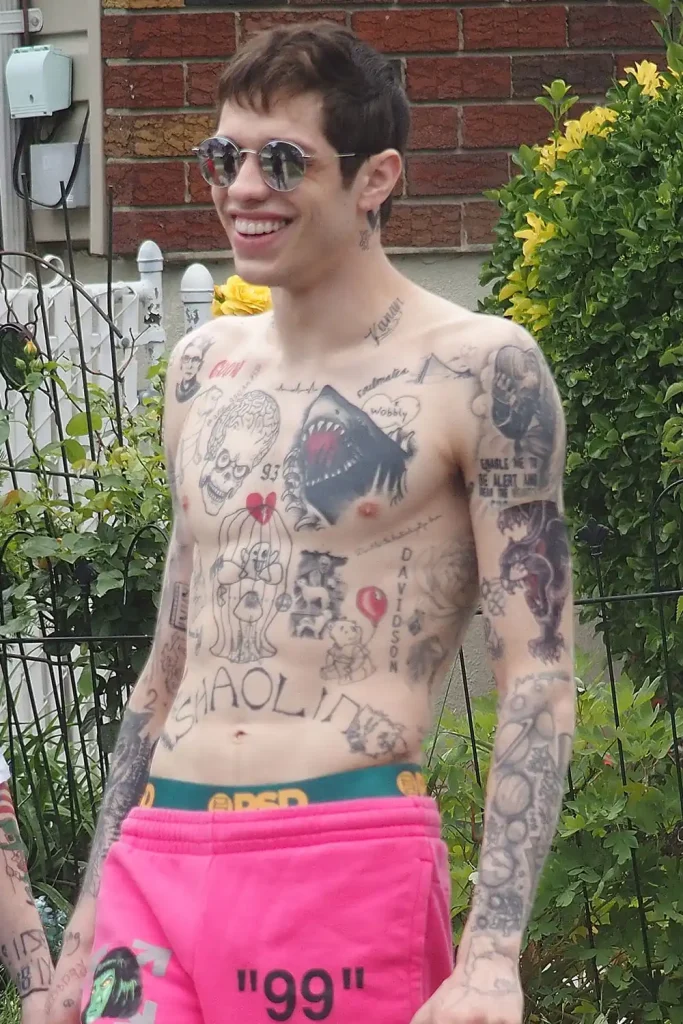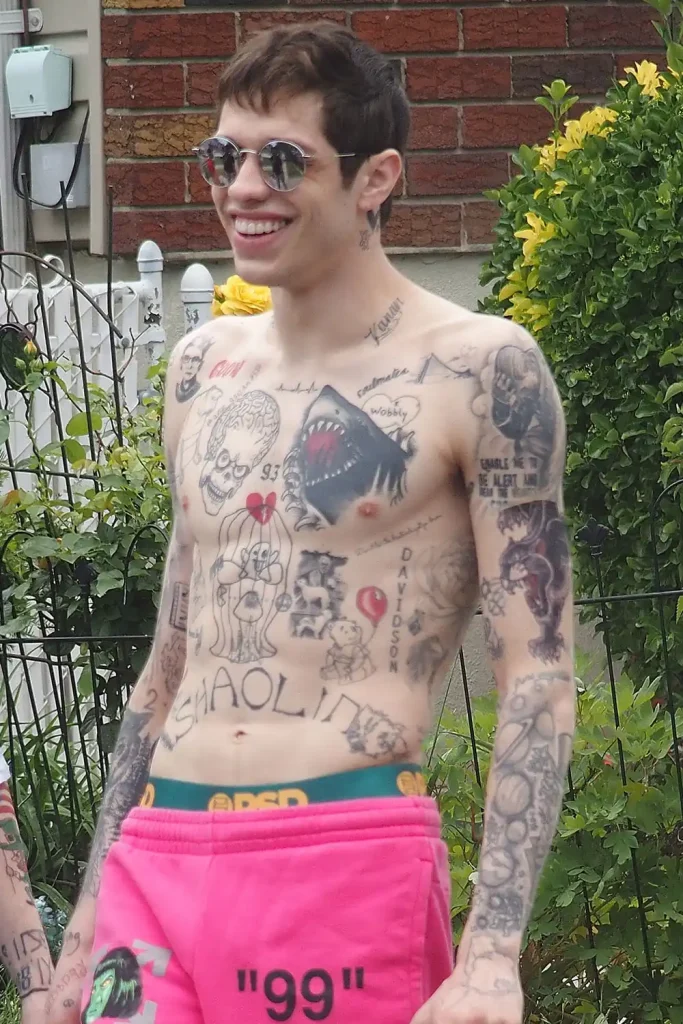Pete Davidson Opens Up About His $200,000 Tattoo Removal Journey — and Why Erasing His Ink Means Rewriting His Life
When Pete Davidson sat down with Variety and other outlets in early 2025 to talk about his dramatic transformation, it wasn’t just a celebrity gesture—it was deeply personal. The comedian and actor revealed he is in the midst of removing nearly all of his roughly 200 tattoos. As he put it, it’s “a sad person that was very unsure” he was trying to leave behind.

Starting the process in 2020, during the COVID-19 lockdowns, Davidson says his arms, neck and hands are now “pretty much gone,” but the journey is far from complete. He estimates the full removal will take another ten years—and cost far more than the six-figure sum already spent. “I’ve already spent like $200K, and I’m like 30 percent done,” he told NBC.
Davidson’s journey is not simply cosmetic, though the visual change is striking. He describes the tattoos as vestiges of a previous life filled with chaos, substance use and self-concealment. “I used to be a drug addict and I was a sad person, and I felt ugly and that I needed to be covered up,” he said. “When I look in the mirror I don’t want the reminder of ‘Oh yeah, you were a f—ing drug addict. Like that’s why you have SpongeBob smoking a joint on your back.’”

He added that he “doesn’t think there’s anything wrong with tattoos,” but for him, they were markers of a time he no longer recognises. The decision, he said, is part of “starting fresh … because that’s what I think works best for me, and for my brain.”
The removal process, Davidson says, is brutal. He described it as “pretty horrible,” likening the sensation to “putting your arm on a grill and burning off a layer. And then you’ve got to do maintenance and let it heal properly.” According to the schedule he shared, each tattoo takes about 10 to 12 sessions spread across roughly 60 weeks of healing time per tattoo. “It’s going to take me another 10 years,” he said.
That timeline and cost are staggering, even for stardom. But Davidson frames it as a necessary investment in his health, his mental state, and his future. The “clean slate” he speaks of isn’t just physical—it’s symbolic. He told interviewers he is “trying to be an adult,” leaving behind impulsive ink decisions tied to his earlier years.

His prioritisation of sobriety aligns with this broader transformation. Earlier in his career, his body was a canvas of tributes—to ex-partners, pop culture, inside jokes and spontaneous moments. Now, those pieces of his past are fading, literally and figuratively. The visual overhaul is paired with a more sober, considered version of himself. One insider told People magazine that Davidson “just woke up one day and wanted them gone, and it’s been a years-long process.”
What does this reveal about Davidson and the public persona he inhabits? For one, it shows a man trying to reclaim his image on his own terms. Tattoos—once a form of self-expression—became a mirror reflecting a life he no longer wanted. By removing them, Davidson is visually aligning his exterior with the interior reality he’s striving for. In the high-visibility world of entertainment, that effort is both courageous and complex.
Some may question the value of a decade-long, six-figure tattoo match-undoing. After all, tattoos were once permanent declarations of identity—now they’re becoming temporary. And for someone whose public image is inseparable from his inked persona—the “tattooed funny guy” on the cover of magazines—this erasure is also a rebrand. It begs the question: is this about authenticity, or about performative reinvention? Davidson seems to believe it’s both.

He doesn’t shy away from the discomfort. On an appearance on The Tonight Show Starring Jimmy Fallon, he brushed off the idea of a quick zap and move-on. Instead, he warned fans of the long haul: “You’ve gotta do it like 12 more times.”
For his part, Davidson says he wants to hang on to only “maybe, like, two or three” tattoos—something with meaning, not impulse. Which ones will survive? He hasn’t said. But even that decision feels deliberate—a final edit in his body story.
Ultimately, this tattoo-removal arc is about more than skin. It’s about identity, healing and the continuous work that fame doesn’t erase. For years, Davidson’s body bore the signatures of his past—the wild nights, the messy relationships, the stand-up offices and the drift. Now he is choosing a blankness—a canvas not yet filled.
In a culture where tattoos are celebrated as permanent markers of self, Davidson’s decision flips the narrative. He isn’t chasing invisibility or purity—he’s simply demanding that his body reflect his values today, not who he was yesterday. That resonates not just because he is famous, but because it’s human: we all have things we regret, layers we wish we could peel back. Davidson is just doing it in full public view.
As his removal progresses, the headlines will follow. But beyond the dollars and the timeline, there is a quieter story—of a man willing to pay for a second chance, willing to let the ink fade so the person beneath can step forward. The tattoos were never truly the problem; they were the markers. Removing them doesn’t erase the experiences, but it allows him to walk forward without carrying the weight of who he used to be. For Pete Davidson, the clean slate isn’t just aesthetic—it’s the starting line.


